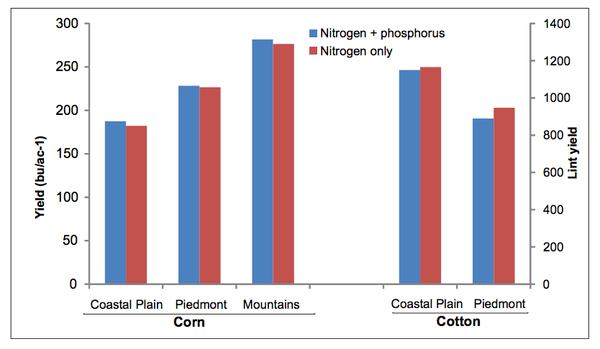Late Summer Ambrosia Beetle Attacks
Granulate ambrosia beetles are primary pests of nurseries in spring. However, it seems like every year folks report ambrosia …



Carteret County Center will be closed today, 07/04/2025 for the holiday. We're closed Fri 7/4 and back on Mon 7/7. We look forward to hearing your Carteret County concerns. Have a happy & safe 4th!

Extension and research at NC State address timely issues impacting our state. Extension delivers trusted information directly into the hands of farmers and agribusinesses, helping them translate knowledge into solutions that grow our economy and communities.
El inglés es el idioma de control de esta página. En la medida en que haya algún conflicto entre la traducción al inglés y la traducción, el inglés prevalece.
Al hacer clic en el enlace de traducción se activa un servicio de traducción gratuito para convertir la página al español. Al igual que con cualquier traducción por Internet, la conversión no es sensible al contexto y puede que no traduzca el texto en su significado original. NC State Extension no garantiza la exactitud del texto traducido. Por favor, tenga en cuenta que algunas aplicaciones y/o servicios pueden no funcionar como se espera cuando se traducen.
Inglês é o idioma de controle desta página. Na medida que haja algum conflito entre o texto original em Inglês e a tradução, o Inglês prevalece.
Ao clicar no link de tradução, um serviço gratuito de tradução será ativado para converter a página para o Português. Como em qualquer tradução pela internet, a conversão não é sensivel ao contexto e pode não ocorrer a tradução para o significado orginal. O serviço de Extensão da Carolina do Norte (NC State Extension) não garante a exatidão do texto traduzido. Por favor, observe que algumas funções ou serviços podem não funcionar como esperado após a tradução.
English is the controlling language of this page. To the extent there is any conflict between the English text and the translation, English controls.
Clicking on the translation link activates a free translation service to convert the page to Spanish. As with any Internet translation, the conversion is not context-sensitive and may not translate the text to its original meaning. NC State Extension does not guarantee the accuracy of the translated text. Please note that some applications and/or services may not function as expected when translated.
Collapse ▲Granulate ambrosia beetles are primary pests of nurseries in spring. However, it seems like every year folks report ambrosia …

A number of folks are concerned about sap beetle injury this year. Sap beetles are secondary pests. That means …
Originally posted on ecoipm.org Last week I wrote a post about recent research by Don Cipollini and Chad Rigsby at …
Originally posted on ecoipm.org See an update to this story posted here. As reported by Entomology Today, Emerald ash borer, Agrilus …
July news for backyard flock owners (Copied from July Poultry News, North Carolina Department of Agriculture Veterinary Division) State Veterinarian Doug …

Impatiens necrotic spot virus (INSV) affects ornamental greenhouse crops like impatiens and mums but also many vegetables and herbs. The …
Maybe you have already found the relatively new (at least to me) Extension Resource Catalog. This is a huge …
Each year the Cotton Belt entomologists are polled concerning insecticide efficacy. You can find these by going to the …

This article is focused on management of stink bugs in the Blacklands, Coastal Plain, and eastern Piedmont (primarily brown …
Originally posted on ecoIPM.org. Mimosa webworms are active in Raleigh. I saw initial webbing this week. These are annual pests …
Originally posted on ecoIPM.org Every year around this time I get calls and emails from homeowners and landscapers who notice …
Originally posted on ecoIPM.org It seems like everything is labeled ‘next generation’ or ‘second generation’ to imply a better, more …
Originally posted on ecoIPM.org I was in Northwestern Pennsylvania last week and found tulip poplar trees with leaves that had …
Hibiscus sawfly, Atomacera decepta, is a common pest of hibiscus. Not much is known about this critter from what I …

Below are two pictures of “black flag” symptoms on young cotton. These pictures were taken by Webster Harrell in …
Originally posted on ecoIPM.org… You can often see hoverflies zipping in and out of flowers in your garden. They approach …
Lace bugs have been out most of the summer but the damage is becoming apparent now as populations grow. …
This week I found cottony camellia scale ovisacs on hollies in my yard and on campus. Cottony camellia scale, …
If you see ragged holes in leaves with no pest in site you may have slugs. Slugs thrive in …
This week Cliff Ruth told me they were finding red headed flea beetle adults and larvae in mountain nurseries. …

This publication discusses Anthracnose Fruit Rot (Colletotrichum sp.) of blueberries in detail. Included are the …

This factsheet for farmers describes concepts, terminology, and guidelines concerning soil sampling. Proper testing allows …

Phosphorus (P) is the second most important nutrient in crop production but is often found …
This factsheet summarizes the symptoms and management of stubby-root nematodes in soybean in North Carolina.
Lance nematode is not a common problem of soybeans, but can cause local damages in …
The reniform nematode is not a common nematode pressure for soybean growers in North Carolina, …

This soybean disease factsheet covers aerial web blight, a generally minor disease of soybean in …
This factsheet discusses bacterial blight of soybean in North Carolina.